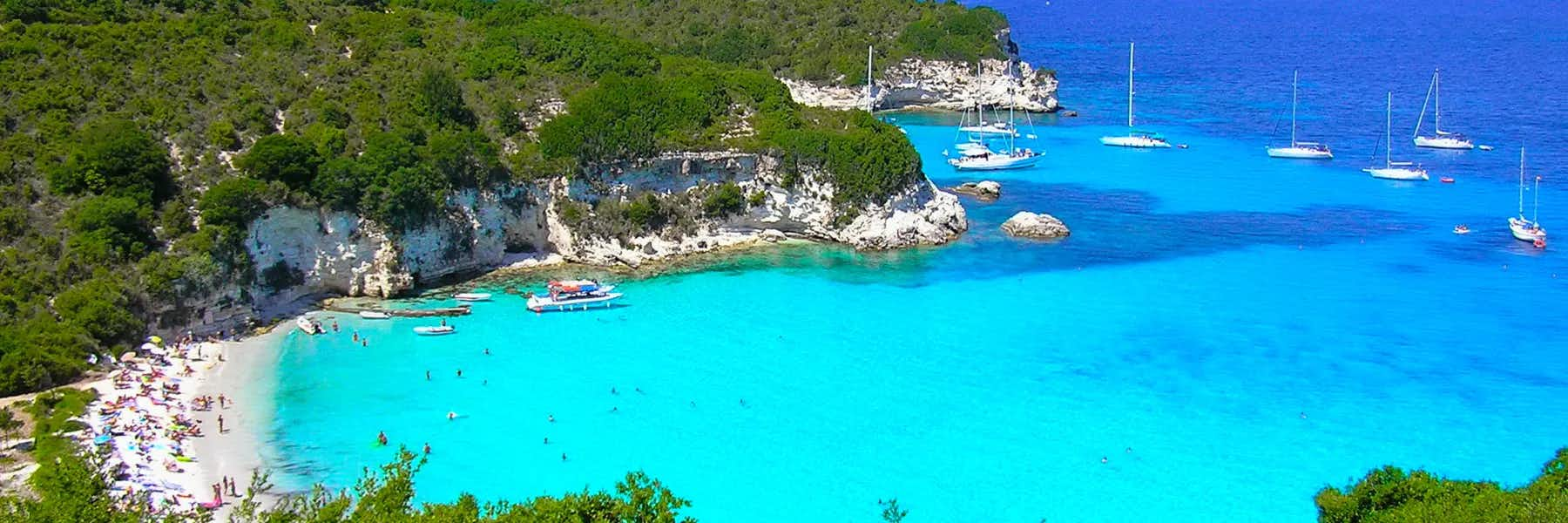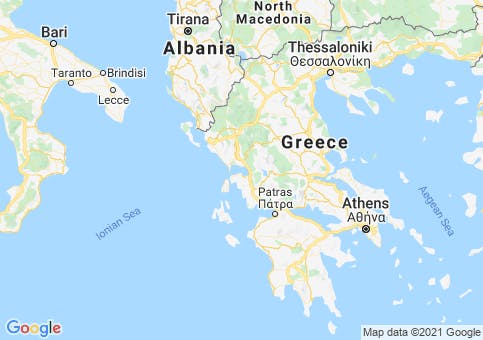By Lynn Roulo
To the west of mainland Greece in the Ionian Sea lies the Ionian island cluster. These islands range from large to tiny and from world-famous to extremely obscure. The most high-profile islands in this group include Corfu, Kefalonia, Lefkada, Zakynthos, Ithaca, and Paxi (also known as Paxos). Lesser-known islands include Antipaxi, Ereikousa, Mathraki, Othonoi, Meganisi, and Strofades.
There is a debate about whether or not Kythira, the furthest island to the south located off the Peloponnese, is part of the Ionian complex or not. Administratively it is listed as part of the Attica (mainland Greece) island unit. You’ll see it reported as both an Ionian island and a Cyclades island but with its far-flung location and a curious blend of Cycladic and Ionian influences, it really deserves its own category.
Like all the Greek island clusters, the Ionian islands have their own personality, character, and appearance. The classic Ionian landscape features lush vegetation, making these islands greener than their Cycladic counterparts. The Ionian Sea is a rich shade of blue so these islands offer a more intense color palette with deep, emerald green landscapes offset against stunning cobalt water. Historically and culturally, these islands have a strong connection to Italy. Corfu, in particular, is influenced by its Venetian ancestors and Corfu Town, the capital city of the island, has a very distinctly Venetian flair.
Get Your Free Greece Report Today!
Get Your Free Greece Report Today!
Learn more about a slower pace of life in Greece and other countries in our free daily postcard e-letter. Simply enter your email address below and we'll also send you a FREE REPORT — Retire in Greece—Find Your Dream Retirement in This European Archipelago.

By submitting your email address, you will receive a free subscription to IL Postcards, Overseas Dream Home, The Untourist Daily and special offers from International Living and our affiliates. You can unsubscribe at any time, and we encourage you to read more about our Privacy Policy.
Corfu

The administrative capital of the Ionian islands is Corfu, an island with a landmass of 236 square miles near the coast of Italy. Corfu and its three satellite islands of Mathraki, Othonoi, and Ereikoussa form the most northwestern edge of Greece. The island also has easy proximity to Albania and from the eastern side of Corfu, you can see the Albanian coastline where in some sections it is only two miles away.
Corfu is a fascinating mix of Greek mythology, medieval influence, and modern popularity. Named after the beautiful nymph Korkyra who fell in love with the god of the sea Poseidon, the city was under Venetian rule for hundreds of years. The Old Town of Corfu City is listed as a UNESCO World Heritage site, and the Old Fortress of Corfu Town was the film location for a James Bond scene in the 1981 movie For Your Eyes Only. The first university of the modern Greek state, the Ionian Academy, originated in Corfu as did the first Greek theatre and opera house of modern Greece.
The island is particularly well-known for its Easter festival. In Greece, Easter is by far the most important holiday, and the Easter celebration in Corfu is even bigger, featuring not one, but two resurrection celebrations. The First Resurrection happens around 11:00 am on Megali Sabato (Big Saturday), the day before Easter Sunday. Church bells ring, inviting the residents of Corfu Town to go onto their balconies and drop clay pots onto the street below. Called the “Botides,” the custom is very festive with huge crowds of spectators and bands playing traditional music throughout the streets. The Second Resurrection happens at midnight when the whole island celebrates with fireworks, candles, ringing church bells, and the refrain “Christos anesti” (Christ is risen). After the fireworks and church bells die down, most people go to a taverna for a late-night meal featuring traditional dishes such as tsilichourda (meat soup) and fogatsa, a traditional Corfiot brioche.
No matter your taste, Corfu is worth a visit.
Kefalonia
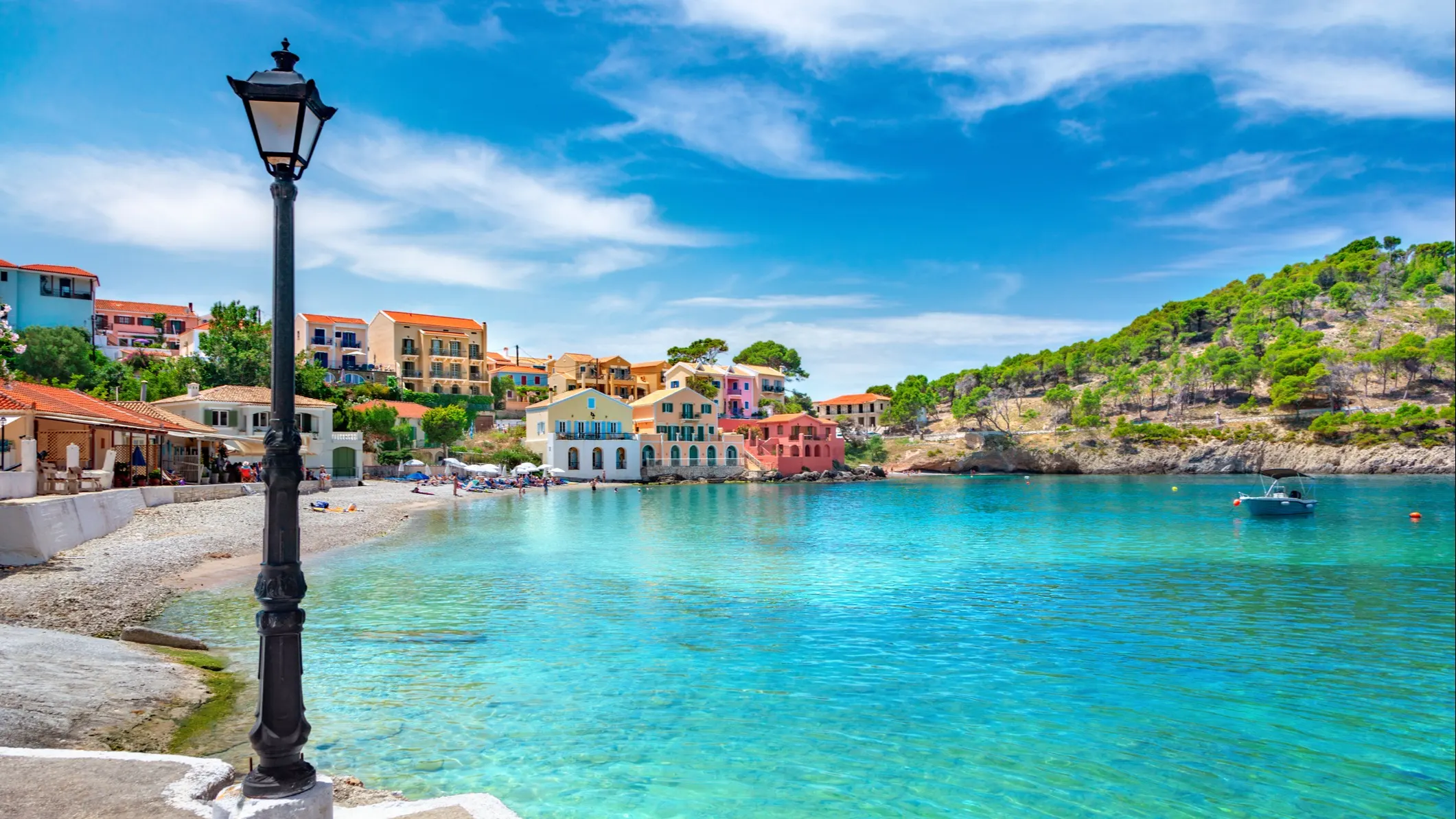
Spanning 298 square miles, Kefalonia is the largest of the Ionian islands and the sixth-largest island in Greece.
The island is known for its diverse natural beauty and beyond the gorgeous beaches and charming villages you’ve come to expect, you’ll find some things that are unique only to Kefalonia.
A special species of tree with whitish branches and sharp needles found nowhere else in the world grows on the island of Kefalonia. Because the island’s soil is rich in inorganic metals, the goats and rabbits of Kefalonia are said to have gold-colored teeth. And if you are seeking Greek mythology, go to “the cave of the nymphs,” the fairytale setting of Cave Melissani. This otherworldly spot features a cave with a lake inside surrounded by a forest. The cave itself has two chambers, one of which has a hole in the top and when the sunlight hits the sea at the right angle, the entire Cave of Melissani looks like it has been lit by a magical blue light. You can book a boat tour to see it for yourself.
If you love unique natural beauty, Kefalonia is the island for you.
Lefkada
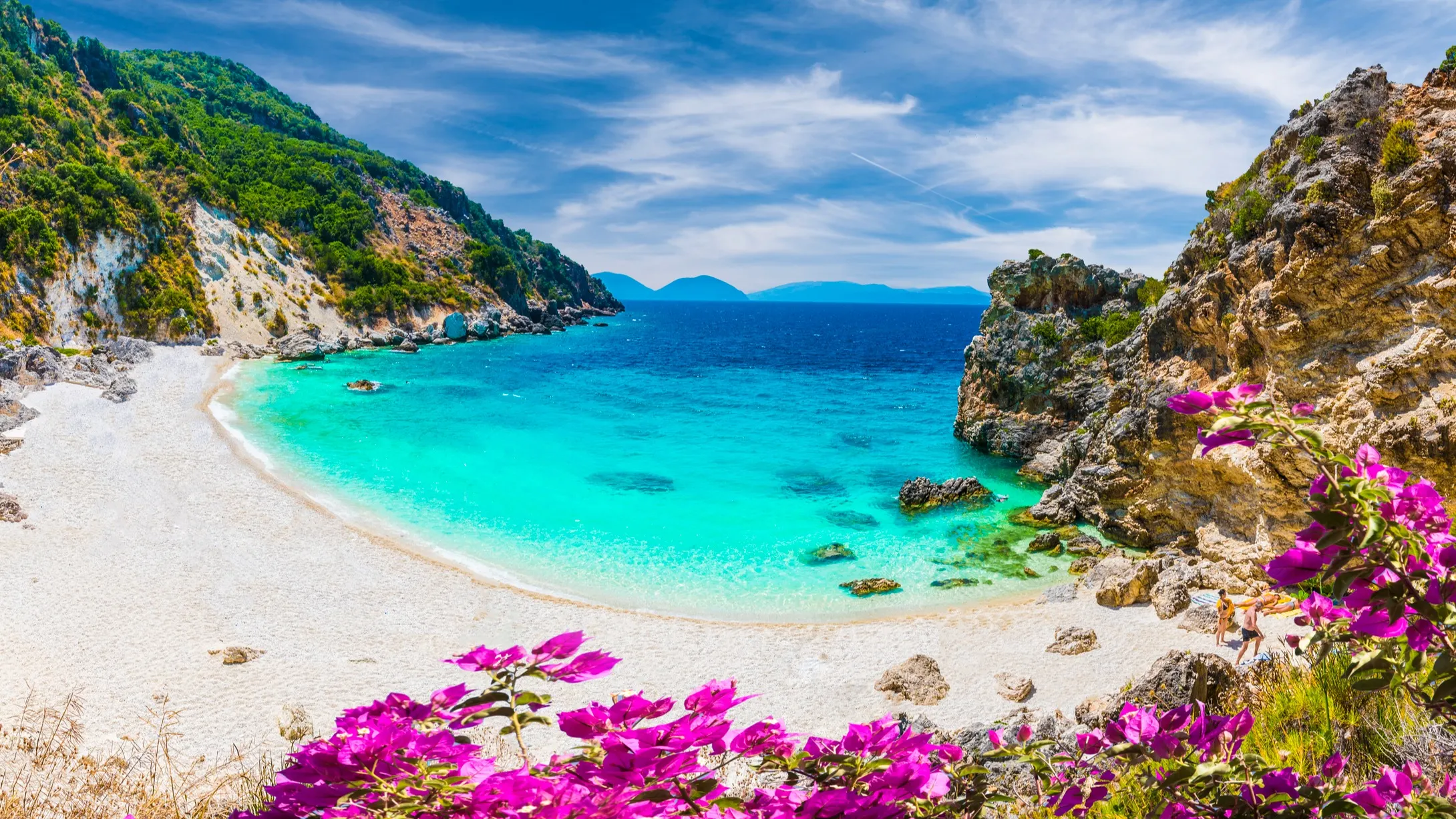
To the north of Kefalonia lies Lefkada, one of the only Greek islands connected to the mainland by a bridge. The causeway and floating bridge offer many advantages to residents and visitors alike. Because you can go by car, the island is more accessible and less reliant on the ferry system, so the periodic ferry strikes don’t pose a disruptive threat to the island.
The name “Lefkada” is derived from “lefko” (λευκό) meaning white in Greek, and the name refers to the pure white rocks at the island’s southernmost point in Cape Lefkada.
In terms of natural beauty, check out the Dimosari Waterfall, with falls cascading nearly 50 feet. For a relaxing nature walk, head to the Melissa Gorge with two distinct walking trails where you’ll find ample natural beauty, small stone bridges, and over 50 watermills. Take in the view at the lighthouse at Cape Lefkada in the south or the Aghia Mavra chapel in the north. And if adventure is what you seek, the island offers paragliding on Kathisma Beach, windsurfing at Vassiliki Beach, and kitesurfing at Milos Beach.
Zakynthos

South of Kefalonia lies Zakynthos, an island with a landmass of 157 square miles. The island is also called “Zante”and was nicknamed “The Flower of the East'' by the Venetians because of its lush vegetation.
It is most famous for Navagio Beach (nicknamed Shipwreck Beach), a gorgeous, powdery, white-sand beach featuring an actual shipwreck. Legend has it that in 1980, a ship named “Panagiotis'' started its journey from Durres, Albania to Piraeus, the Athenian port. It ran into bad weather and was forced ashore at this beach in Zakynthos. What started as a disaster has transformed into one of the most iconic and photogenic images of Greece, and people come from all over the world to see the remains of the ship against the dramatic backdrop of the Ionian Sea and sheer cliffs surrounding the beach where the ship lies.
Along the northwest coast, the Blue Caves are another popular attraction of the island. Stretching from Agios Nikolaos to Skinari Cape, these caves are really geological arches formed by natural erosion. While the limestone arches are impressive, the seawater inside and around the caves makes an even bigger impression. The way the sunlight hits the water produces a spectacular blue, giving the environment an enchanting feel.
Those seeking nature can head to the northern village of Volimes to explore Askos Stone Park, a huge nature park that offers more than 150,000 trees, plants, and shrubs that are native to the region. The park also features free-roaming farm animals and helpful staff, making this a family-friendly attraction.
Ithaca
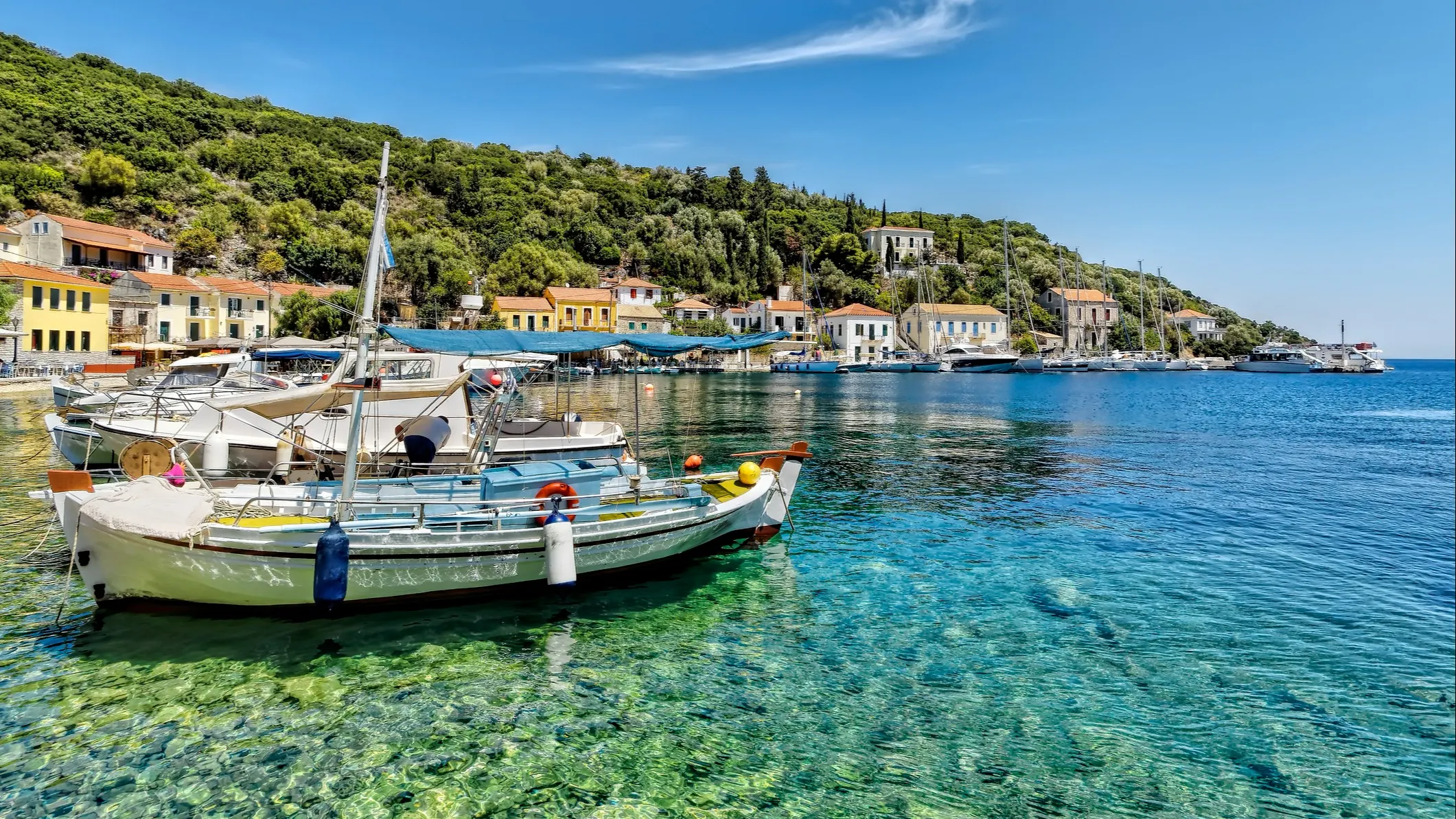
To the northeast of Kefalonia lies the island of Ithaca, a relatively small island of 37 square miles. The island’s claim to fame is centered around Homer's poem The Odyssey, the story of Odysseus and his epic 10-year journey to return from the Trojan War to his home on the island of Ithaca.
Unspoiled, mountainous, and a bit raw, Ithaca is one of the less tourist-focused islands in the Ionian Sea and if you want to escape the maddening crowds, this might be your place. The capital city is Vathy but with a total island population of under 5,000 full-time residents, even the big villages aren’t large. Vathy offers attractions like the Archaeological Museum, the Cave of Nymphs, and the Church of the Savior Christ.
People visit Ithaca to enjoy the beaches of Sarakiniko (not to be confused with the famous Sarakiniko Beach in Milos), Filiatro, and Gidaki, and to stroll through the picturesque villages like Kioni and Stavros. The Monastery of Panagia Kathariotissa, located in the center of the island on the top of a 1,970-foot hill, is another popular site, offering stunning views of the Ionian Sea.
And for Homer enthusiasts, you can visit the School of Homer, an archaeological site up a dirt road near the village of Agios Athanasios. While steeped in ancient history, a visit to this site warrants extra organization and a guide or a guidebook as it is difficult to find, and the site itself doesn’t offer a lot of explanation of the ruins. For those seeking an adventure, this site is sure to deliver.
Paxi
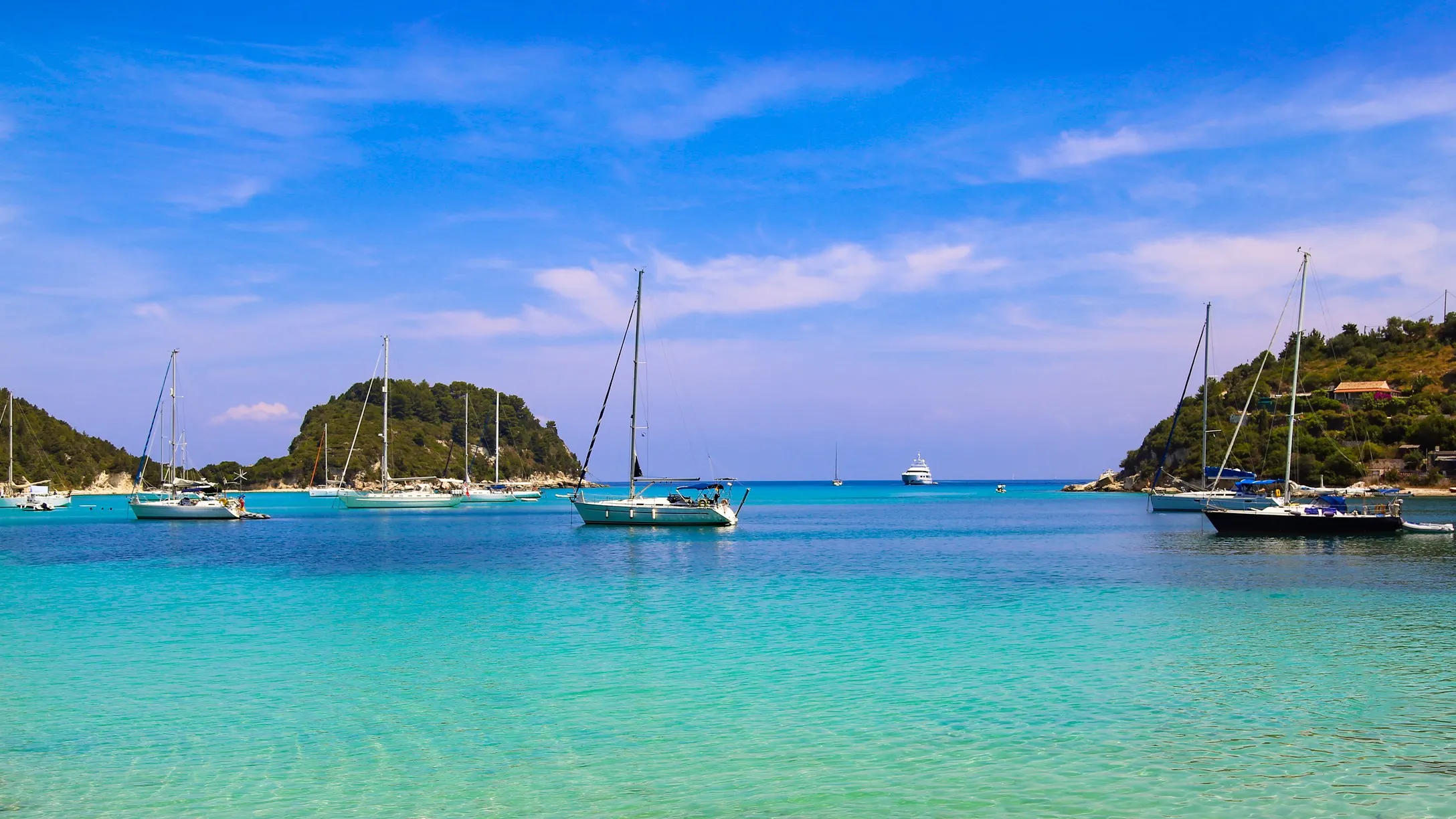
Paxi is a tiny island in the Ionian cluster with a landmass of 12 square miles. Because of its small size and its lack of a focus on tourism, this island is a bit under the radar which makes it ideal for unspoiled beaches and an authentic Greek experience. Expect small, serene beaches surrounded by olive trees and lush vegetation.
Plakes, a small pebbled beach accessible by trail, is one of the more popular seaside destinations, as are Levrechio Beach and Pounda Beach. As many of these beaches are raw and unorganized, be sure to take a sun umbrella and other supplies!
The island also offers several therapeutic hot springs that flow from the subterranean soil of the land into the sea. These sulfur springs can be found at Ozia, Yianna, and Glyfada beaches. At Ozia you’ll also see the old Christian basilica of Agia Marina. If you are seeking a slow-paced, peaceful experience, Paxi is a great choice.
As you can see, the Ionian islands have a lot to offer, from adventure to relaxation and from natural beauty to ancient ruins. If you can’t decide between a trip to Italy and a trip to Greece, go island hopping in the Ionian Sea for the best of both worlds. See our guide to the Greek islands for more island hopping destinations.
Featured Image Copyright: ©iStock/Aleh Varanishcha
Get Your Free Greece Report Today!
Get Your Free Greece Report Today!
Learn more about a slower pace of life in Greece and other countries in our free daily postcard e-letter. Simply enter your email address below and we'll also send you a FREE REPORT — Retire in Greece—Find Your Dream Retirement in This European Archipelago.

By submitting your email address, you will receive a free subscription to IL Postcards, Overseas Dream Home, The Untourist Daily and special offers from International Living and our affiliates. You can unsubscribe at any time, and we encourage you to read more about our Privacy Policy.
